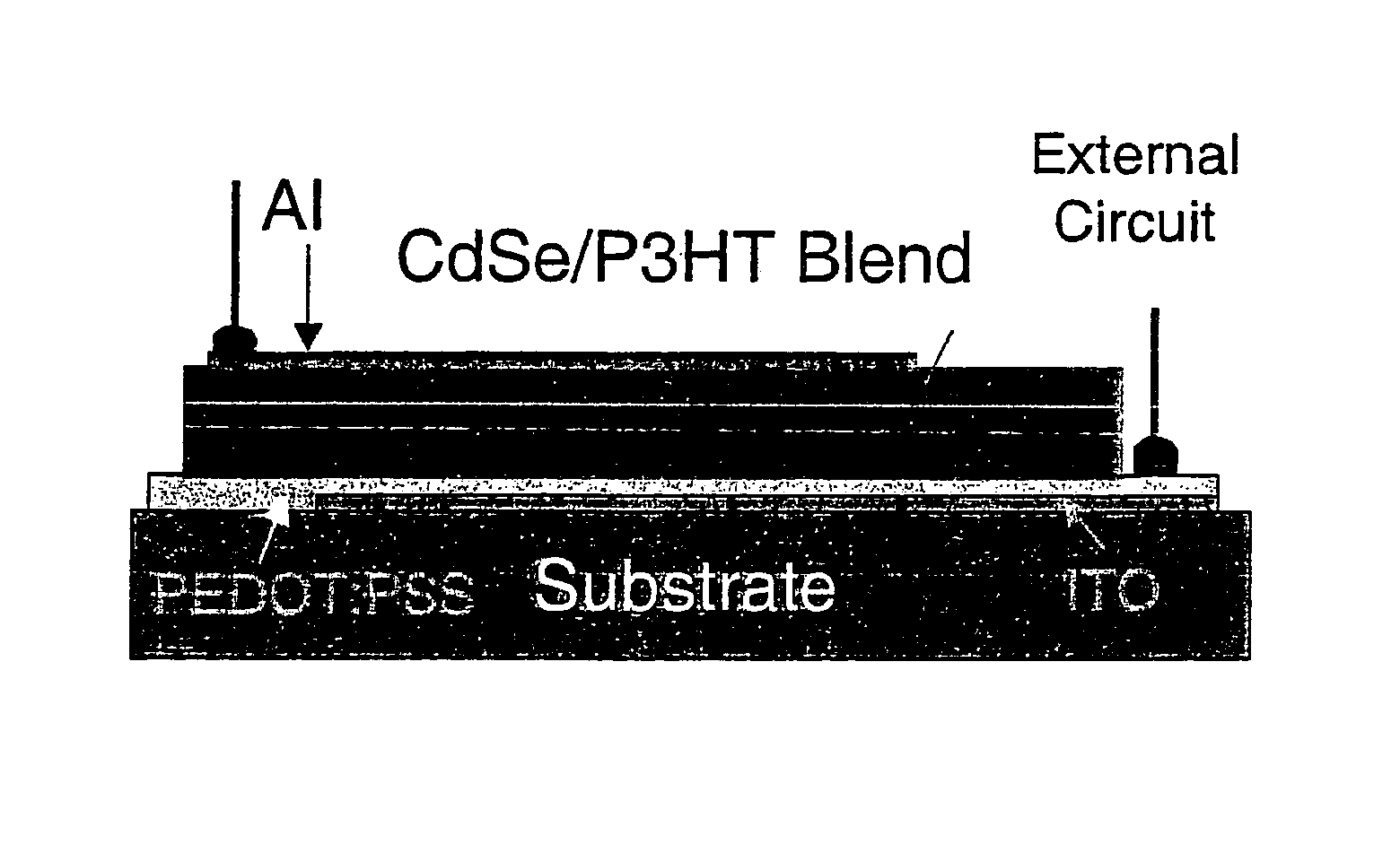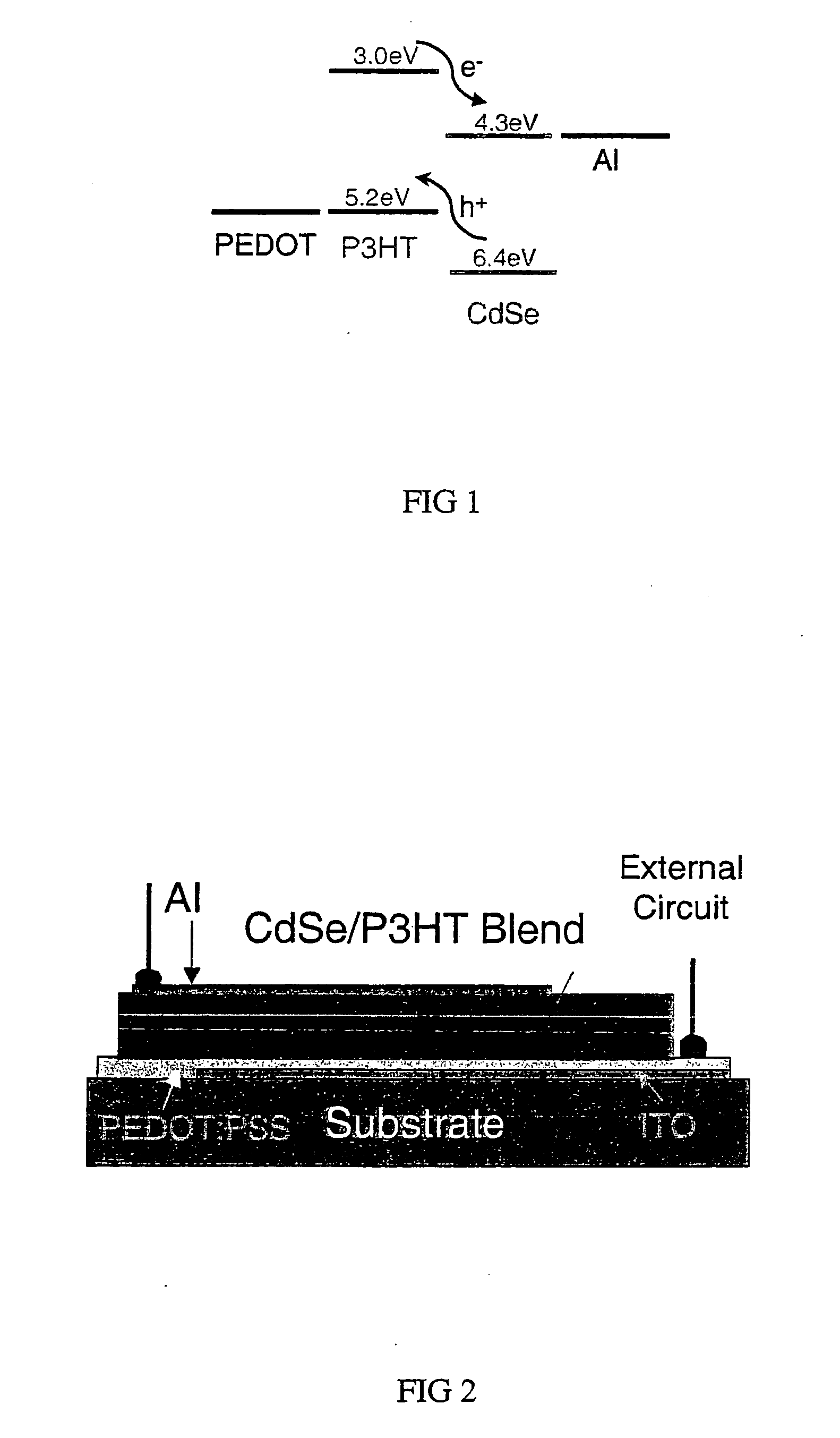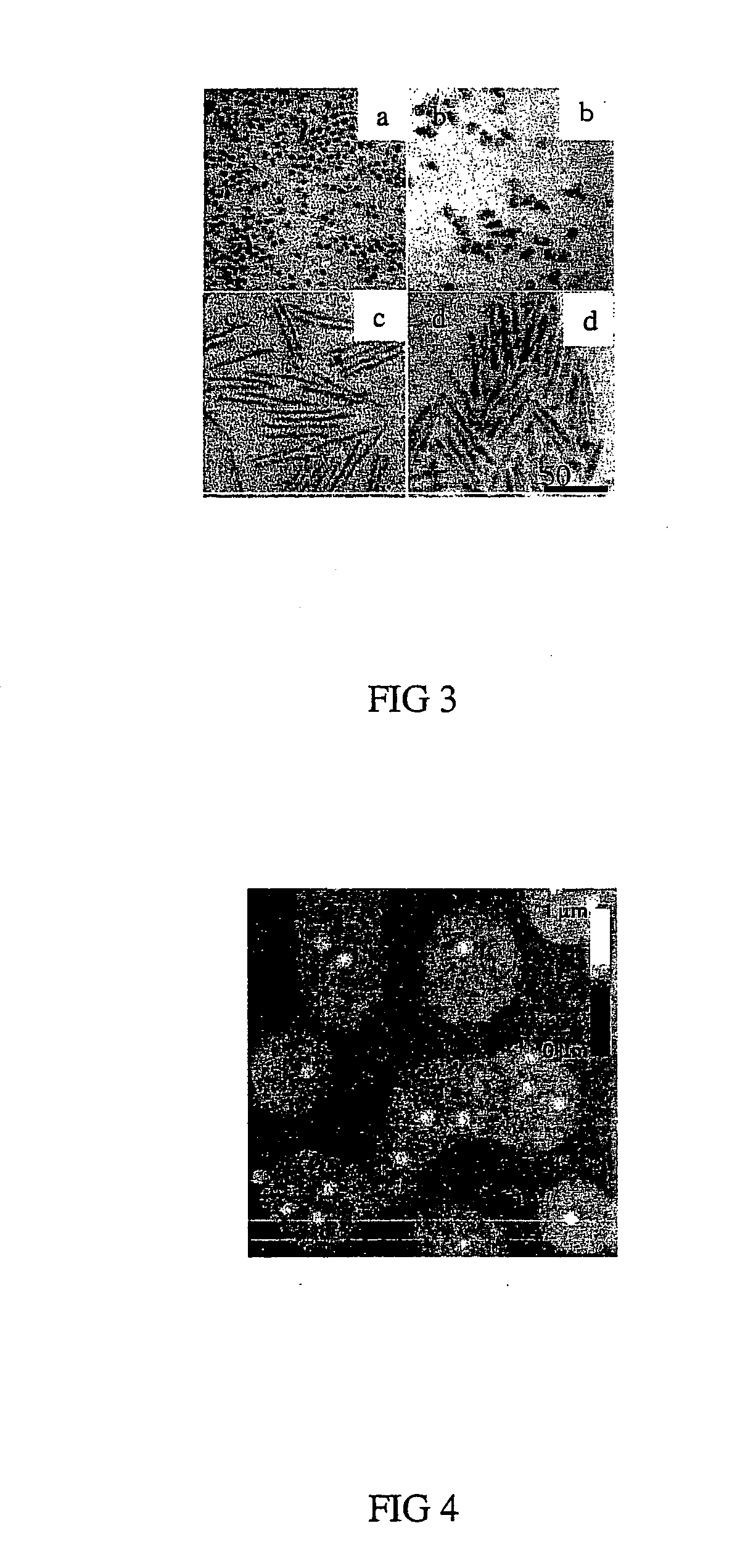Semiconductor-nanocrystal/conjugated polymer thin films
a technology of monocrystalline crystals and polymer thin films, which is applied in the direction of organic semiconductor devices, crystal growth processes, polycrystalline material growth, etc., can solve the problems of high cost of manufacturing solar cells of the prior art, limiting their widespread use as a source of power, and increasing manufacturing costs, so as to achieve high loading amounts
- Summary
- Abstract
- Description
- Claims
- Application Information
AI Technical Summary
Benefits of technology
Problems solved by technology
Method used
Image
Examples
example 1
[0125] According to one embodiment of the invention, photovoltaic devices were fabricated from spin casting a solution of CdSe nanocrystals and P3HT in a pyridine-chloroform solvent mixture onto an ITO coated glass substrate under inert atmosphere, pumping for 12 hours under −6 mbar and evaporating aluminum on top to obtain the structure depicted in FIG. 2.
example 2
[0126] a. Nanocrystal Synthesis: According to another embodiment of the invention long CdSe nanorods in P3HT (90 wt % CdSe) were synthesized as follows: Cd stock: 0.161 g of dimethylcadmium was dissolved in 0.34 g of trioctylphosphine (TOP). Se stock: 0.2 g of Se in 2.367 g of TOP was dissolved. In a three neck flask, 3.536 g of trioctylphosphine oxide (TOPO), 0.187 g of hexylphosphonic acid (HPA), and 0.357 g tetradecylphosphonic acid (TDPA) were mixed. This mixture was heated and degassed under argon to 360C. Cd stock was slowly injected, then the temperature was lowered to 330C the Se stock was rapidly injected. The reaction was allowed to proceed at 290C for 18 minutes then the heat was removed. At 40C, about 15 mL of methanol was added to the flask. The mixture was centrifuged and the supernatant was discarded. 8 mL of methanol was added, vortex, then again centrifuge, discarding the supernatant.
[0127] b. Substrate Preparation: Wash indium tin oxide (ITO) on glass substrates b...
example 3
CdTe Tetrapods in P3HT
[0131] CdTe tetrapod nanocrystals having a core and 4 arms of approximately 80 nm in length were synthesized then washed with several dissolution / precipitation steps in tetrahydrofuran (THF) and ethylacetate.
[0132] The nanocrystals were then codissolved in solvent chloroform with the ligand phenylphosphonic acid and heated at around 100C for several hours.
[0133] The nanocrystals were then precipatated with methanol and redissolved in chloroform.
[0134] The nanocrystal solution was mixed with a P3HT solution as described in example 2 and spin cast to create thin films.
[0135] Substrates and electrodes were processed as in example 2. The EQE value for this sample was less than 10%.
PUM
| Property | Measurement | Unit |
|---|---|---|
| thickness | aaaaa | aaaaa |
| thickness | aaaaa | aaaaa |
| aspect ratio | aaaaa | aaaaa |
Abstract
Description
Claims
Application Information
 Login to View More
Login to View More - R&D
- Intellectual Property
- Life Sciences
- Materials
- Tech Scout
- Unparalleled Data Quality
- Higher Quality Content
- 60% Fewer Hallucinations
Browse by: Latest US Patents, China's latest patents, Technical Efficacy Thesaurus, Application Domain, Technology Topic, Popular Technical Reports.
© 2025 PatSnap. All rights reserved.Legal|Privacy policy|Modern Slavery Act Transparency Statement|Sitemap|About US| Contact US: help@patsnap.com



